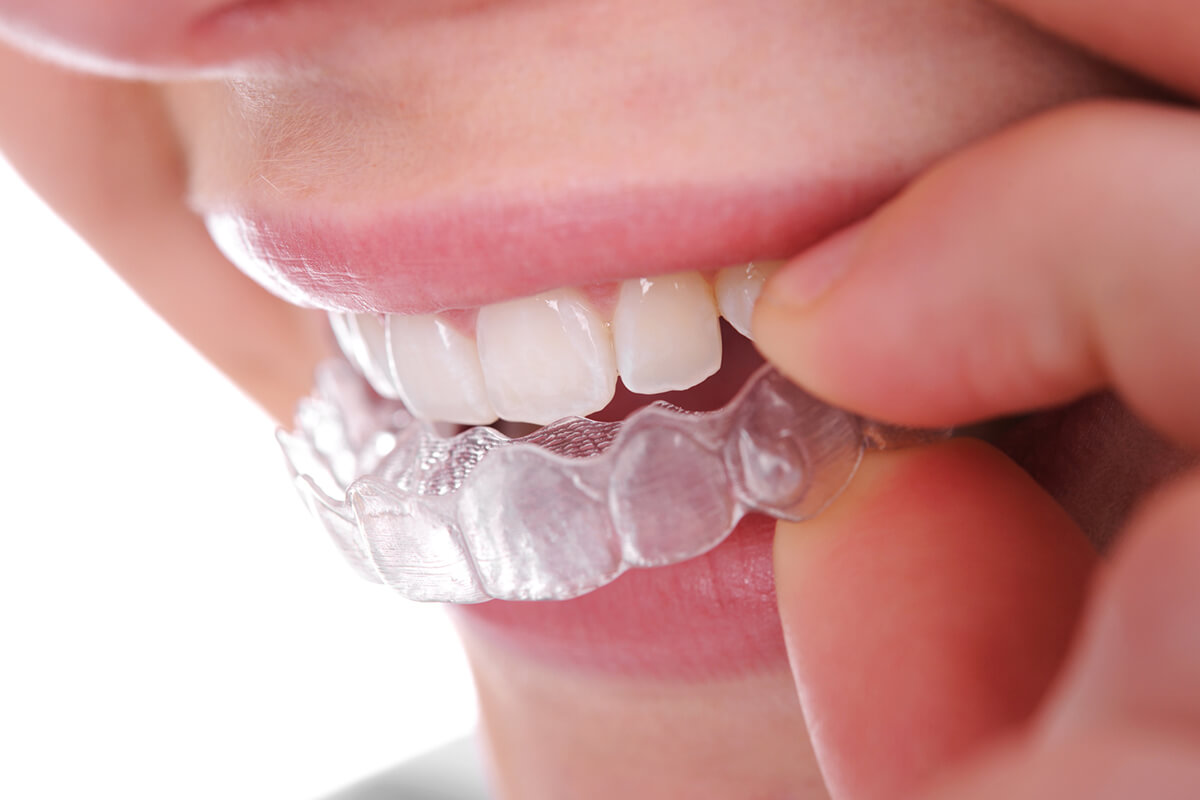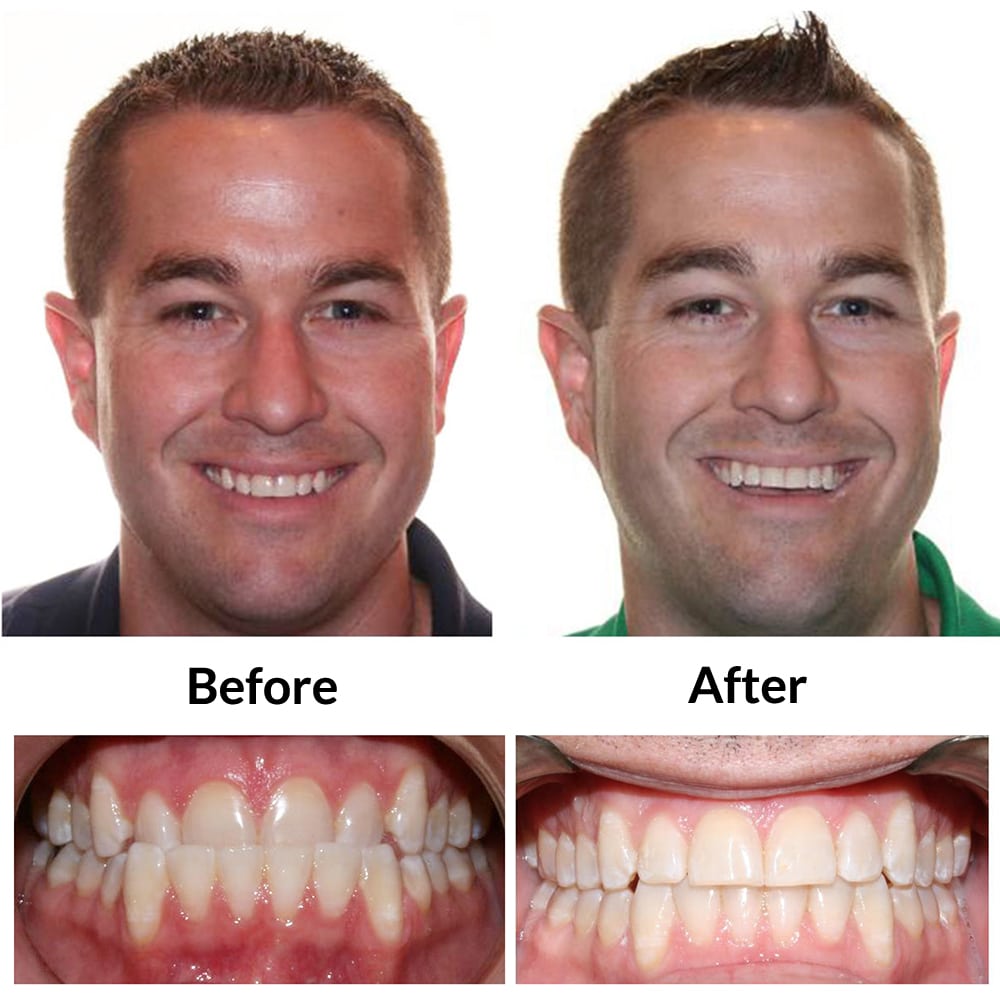The Ultimate Contrast: Invisalign vs. Traditional Braces for Grownups
The Ultimate Contrast: Invisalign vs. Traditional Braces for Grownups
Blog Article
Invisalign vs. Conventional Dental braces: Which Alternative Is Right for You?
When considering orthodontic treatment, the selection in between Invisalign and standard braces presents several vital variables that warrant cautious evaluation. Invisalign offers a very discreet option with removable aligners, while typical dental braces offer a more noticeable yet efficient service for extreme imbalance.
Summary of Treatment Alternatives

On the other hand, conventional dental braces consist of steel brackets and cords that are bound to the teeth. This method uses constant pressure with time to achieve alignment. While reliable for complex orthodontic issues, traditional dental braces call for normal check outs for modifications and can position difficulties in preserving dental health due to the problem of cleansing about brackets and cords.
Both choices have their qualities, and the selection often depends upon particular oral problems, way of living choices, and patient compliance. Ultimately, seeking advice from an orthodontic specialist is critical for identifying the most suitable treatment plan tailored to individual needs. Understanding the subtleties of each alternative can significantly affect the total success of orthodontic treatment.
Visual Factors To Consider
A considerable factor influencing the option between Invisalign and conventional dental braces is the aesthetic allure each treatment offers. Invisalign aligners are crafted from clear plastic, making them essentially invisible when used.
On the other hand, typical braces consist of metal brackets and cords, which can be much more obvious. While innovations in orthodontic innovation have actually led to the advancement of smaller sized braces and colored elastics, traditional dental braces still keep an even more noticeable account. For some people, the exposure of dental braces may hinder them from seeking necessary therapy.
Ultimately, the option in between Invisalign and standard braces might rest on individual choices relating to aesthetic appeals. Individuals that focus on discernment typically lean toward Invisalign, while those who are less worried regarding exposure may go with typical braces. Recognizing the aesthetic implications of each alternative is vital for making an informed choice that straightens with one's way of life and choices.
Convenience and Convenience

In regards to benefit, Invisalign aligners are detachable, making it possible for individuals to enjoy their favored foods without restriction and preserve optimal dental health. Cleaning and flossing are simplified, More Help as the aligners can be gotten throughout these regimens, whereas traditional dental braces need cautious steering around braces and wires.
In addition, Invisalign's dynamic system allows for fewer orthodontic gos to. Clients usually get multiple sets of aligners at as soon as, which can enhance the therapy procedure and decrease time spent in the orthodontist's chair. In comparison, standard dental braces necessitate regular changes, making them less practical for those with hectic schedules. Invisalign. In general, the comfort and comfort of Invisalign make it an attractive choice for many individuals seeking orthodontic treatment.
Treatment Period and Effectiveness
While both Invisalign and typical braces are effective in fixing dental misalignments, the period of treatment can differ considerably between the two choices. Generally, Invisalign therapy can take anywhere from 12 to 18 months, relying on the complexity of the case. The clear aligners work by slowly moving teeth right into their preferred settings, and routine follow-ups click site with an orthodontist help guarantee development remains on course.
In comparison, conventional braces typically need a longer dedication, typically ranging from 18 months to 3 years. This is due to their fixed nature and the usage of brackets and wires, which can be a lot more reliable for intricate cases and serious misalignments (Invisalign). The treatment efficiency of standard braces is well-documented, as they permit exact modifications and higher control over tooth movement
Eventually, the selection between Invisalign and conventional dental braces may pivot on both the expected therapy duration and the certain oral concerns available. Consulting with an orthodontist is vital, as they can give customized suggestions based on private demands, making certain the selected method straightens with preferred timeframes and end results.
Expense Comparison and Insurance Policy Choices
Cost plays a considerable function in the decision-making procedure for individuals taking into consideration orthodontic treatment, whether selecting Invisalign or typical dental braces. Typically, the cost of Invisalign ranges from $3,000 to $8,000, while typical dental braces commonly cost between $2,000 and $6,000. Aspects influencing these costs include the complexity of the case, the duration of treatment, and geographical place.
Lots of dental insurance strategies supply partial protection for orthodontic therapies, yet the specifics can vary widely. Normally, conventional dental braces might be a lot more often covered by insurance plans contrasted to Invisalign, which some insurance firms classify as an aesthetic treatment.
In addition, several orthodontic practices provide versatile layaway plan, making both therapy alternatives extra available. Clients ought to ask regarding prospective funding choices and price cuts you can try this out for ahead of time settlements. Reviewing the complete price, consisting of insurance policy advantages and repayment plans, is necessary for making an educated choice that lines up with both aesthetic preferences and budget considerations.

Verdict
In recap, the selection in between Invisalign and standard dental braces rests on several elements, including aesthetic choices, convenience, therapy duration, and cost. Invisalign provides a discreet, removable option that facilitates oral hygiene and nutritional adaptability, while typical dental braces might be a lot more appropriate for complicated dental concerns and often come with a reduced price point. Ultimately, assessment with an orthodontist is necessary to examine specific scenarios and figure out one of the most ideal treatment option for attaining ideal dental alignment.
When taking into consideration orthodontic treatment, the choice in between Invisalign and standard braces offers a number of important variables that warrant careful evaluation.Contrasting Invisalign and conventional braces discloses unique therapy alternatives for orthodontic modification.While both Invisalign and conventional dental braces are efficient in dealing with dental imbalances, the duration of treatment can differ considerably in between the two options.Price plays a substantial duty in the decision-making process for people considering orthodontic therapy, whether opting for Invisalign or traditional braces.In summary, the choice in between Invisalign and typical dental braces pivots on numerous variables, including visual preferences, convenience, therapy period, and price.
Report this page